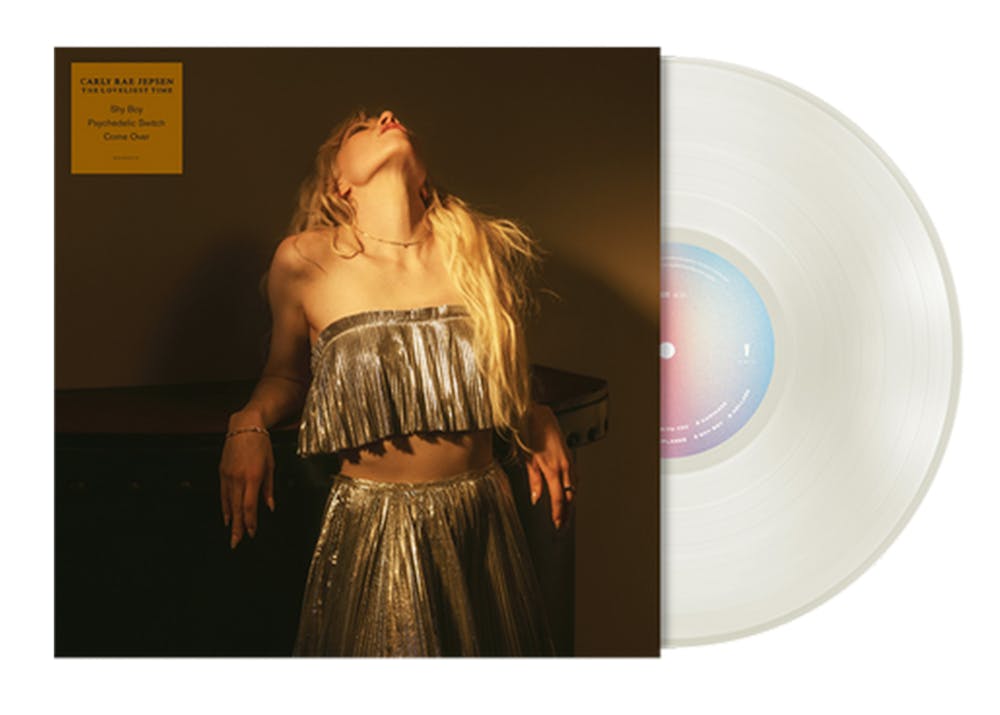It’s becoming more and more common to see pop artists branch out and experiment once they’ve garnered something of an audience. Taylor Swift’s two 2020 albums come to mind, as do Harry Styles’ post-One Direction efforts and even Lil Yachty’s “Let’s Start Here.”
Carly Rae Jepsen, whose 2012 smash hit “Call Me Maybe” kickstarted a prolific musical career, seems to have taken after this tradition.
Jepsen’s newest release, “The Loveliest Time,” also falls into a tradition of her own — releasing an album of B-sides following each album. Although “B-sides” may not be quite the right word. While it follows 2022’s “The Loneliest Time,” Jepsen has made clear that these tracks are not throwaway ideas that weren’t good enough for the album proper.
Rather, she used the safety of this space to experiment and try new things, and many of the album’s highest points are a direct result of this exploration.
The opening number, “Anything to Be With You,” sets both a clear precedent and a high bar for Jepsen’s new idioms. The backing instrumentals are intensely funky, emphasizing the varied drums.
Rhythmic guitar chords and a syncopated bassline flesh out the song but remain somewhat in the background compared to the vocals and drums, while occasional horn lines add another dash of funky flavor. At first, Jepsen’s bright vocal seems somewhat out of place here, but it doesn’t take long to settle into the groove.
It immediately jolts the listener in a different direction with “Kamikaze,” a hard-hitting, disco-inspired club banger. A dense synth texture sits atop a bumping drum backbeat, all framing Jepsen’s wide, reverberating vocals.
“Shy Boy,” the album’s lead single, keeps the disco setting but eases off on the thumping dance beat. The bassline is doubled by a bubbly synth an octave up, giving the appearance of a countermelody.
Though the texture here is mostly composed of synths, they all sound distinct and drop in and out often to keep things interesting and add dynamism. The build to the chorus is especially effective, gradually filling out the drumbeat and fading in string-like synth sounds.
The furthest leap from Jepsen’s comfort zone comes on “Kollage.” It takes on the echoey, ethereal textures of dream pop, evoking artists like Kali Uchis and Men I Trust.
Despite this departure — or perhaps because of it — “Kollage” is fantastic. The whole track seems to shimmer, with a more prominent bassline and enormous, reverbed synths. Jepsen’s vocal takes on a softer, breathy timbre that slots into the groove wonderfully.
The closer, “Weekend Love,” largely returns to Jepsen’s well-known sound. The texture is relatively simple, mostly consisting of drums, bass, and flute-sounding harmonies. It’s easy to say that it’s not as spectacular as other entries, but long-time Jepsen fans will no doubt be pleased.
This kind of work can be a double-edged sword. On the one hand, it’s great that these artists have a consistent enough following to branch out into less crowd-pleasing territory, and that the fruits of this labor are often some of their best work.
On the other hand, it’s to be lamented that they had to spend time under the watchful eye of studio executives to get there, typically forcing them into creating for others rather than for themselves. Would that art could be created without concern for profit incentives and quarterly numbers, but alas, such is the world we live in.
Regardless, “The Loveliest Time” and others like it should be celebrated for what they are. There’s an audible shift when an artist comes into their own and begins to break down the barriers of industry, making music that fuels and thrills them, and this feeling is usually passed on to the listeners.
Excitingly, it can be heard all over “The Loveliest Time.”




